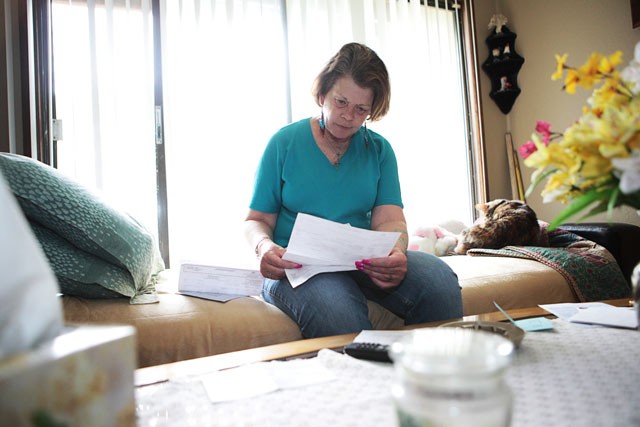Pat Tschida rubbed super glue on the cracked part of her dentures for 10 years to keep them intact.
The minute she clocked out of work, the dentures came out. The tipping point for Tschida came when paper towels failed to stopper an abscessed tooth. TschidaâÄôs sister told her about a clinic staffed by dental students from the University of Minnesota, and they decided she should try it out.
In tough financial times, University dental clinics give predoctoral student dentists valuable experience while providing care for patients like Tschida at prices 30 to 50 percent lower than private providers charge.
âÄúI couldnâÄôt afford to go back to the dentist,âÄù Tschida said, describing how her dentures had been digging into her gums and tearing up her soft tissue.
Patrick Lloyd, dean of the UniversityâÄôs School of Dentistry, said he worries that low-income or jobless Minnesotans arenâÄôt maintaining their regular schedule of visits to the dentist. In that case, he said, the University clinics are a good option for them to get high quality care at much lower costs.
âÄúWe could handle an increased number of patients,âÄù he said.
Not all dental providers are approved to care for people on state-supported medical assistance, Lloyd said. Thirty-two percent of patients at University dental clinics are on medical assistance âÄî a high enough rate that the state pays the school a higher reimbursement rate for those patients than it pays for practices that serve a smaller percentage of low-income clients.
âÄúWe feel obligated, as a state-funded institution, to be part of the safety net for people who are lower income,âÄù Lloyd said. âÄúNot everyone knows weâÄôre open to the public.âÄù
The University dental clinics may be ideal for people out of work, Lloyd said, because office visits can take longer than usual.
All of student dentistsâÄô work must be checked by a licensed dentist throughout the visit. If a student dentist diagnoses a cavity, a supervisor will confirm the diagnosis before he or she approves drilling or filling it.
Tschida, whose first appointment took four hours, has nothing but praise for the service at the Moos Tower clinic.
SheâÄôs one appointment away from getting her new set of teeth, and sheâÄôs thrilled.
âÄúIâÄôll be able to smile without being embarrassed,âÄù she said.
As a staff member at REM Minnesota, a company that provides services to disabled clients, Tschida makes $10.65 per hour. Paying rent for her two-room apartment in East Saint Paul takes almost half her monthly income of $1200.
A full set of premium dentures can cost $2,000 to $8,000, and getting outfitted can require several appointments for the dentist to take X-rays, perform cosmetic work and take impressions.
Since the clinic accepts TschidaâÄôs insurance âÄî MinnesotaCare âÄî a new upper set of teeth, a bridge on her bottom teeth and several pulled teeth cost her $148.
In his six years working at the UniversityâÄôs dental school, Craig Selden, director of quality assurance, said he has seen two trends. The patient population at University clinics has remained stable, which is interesting because Minnesotans, overall, are spending less on dental care, he said.
Selden has also noticed lately that patients donâÄôt want to spend the money for more complex dental work, so students spend more time working on simpler procedures.
Inside the clinics, dental students in blue scrubs walk busily into the waiting areas, greeting patients like old friends and ushering them back to the chair.
Jake Ihle, a third-year dental student at the Moos Tower University dental clinic, said his patients understand the extra time it takes him. When coming up with a treatment plan, he said, âÄúItâÄôs whatever the patient wants.âÄù
Although Ihle was not TschidaâÄôs dentist, heâÄôs seen situations like hers before.
A patientâÄôs best case scenario might be dental implants âÄî prosthetic teeth permanently fixed to the gums âÄî but sometimes the patient opts for the less expensive âÄúbridge,âÄù in which the false tooth is linked to its neighbors, Ihle said.
A recent survey revealed that about 15 percent of patients commute more than 45 minutes to get to the University dental clinics, Selden said.
After light-rail construction shut down Washington Avenue, Tschida decided to take the bus to her dentist appointments. ItâÄôs two buses and a shuttle from her house, but she doesnâÄôt mind.
Tschida said she hopes the University can âÄúget the message out to people,âÄù to come to its dental clinic.
âÄúI know a lot of people who could benefit from going there,âÄù she said.


